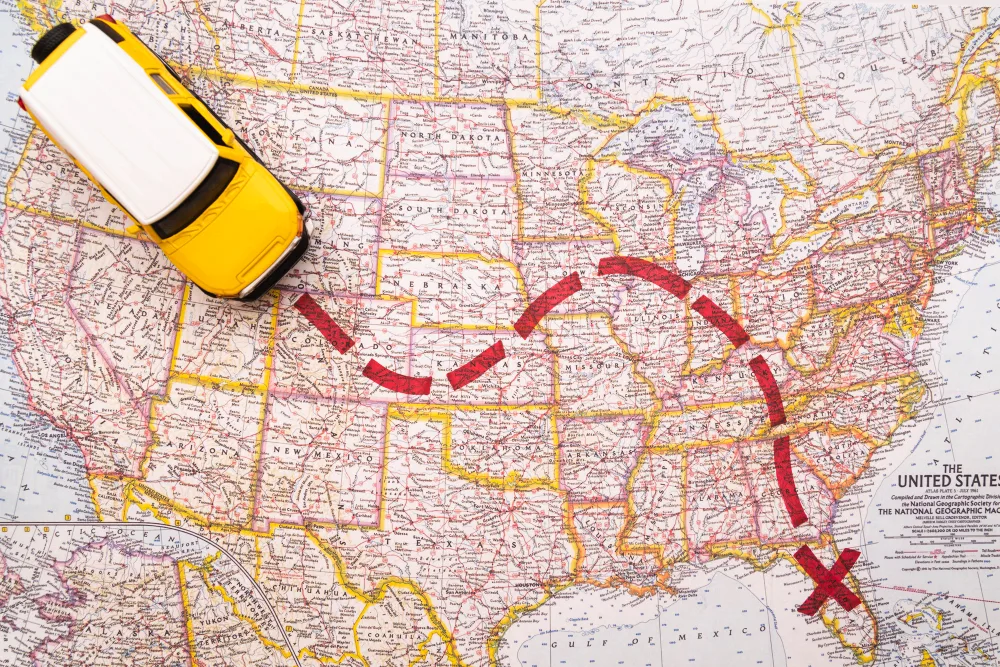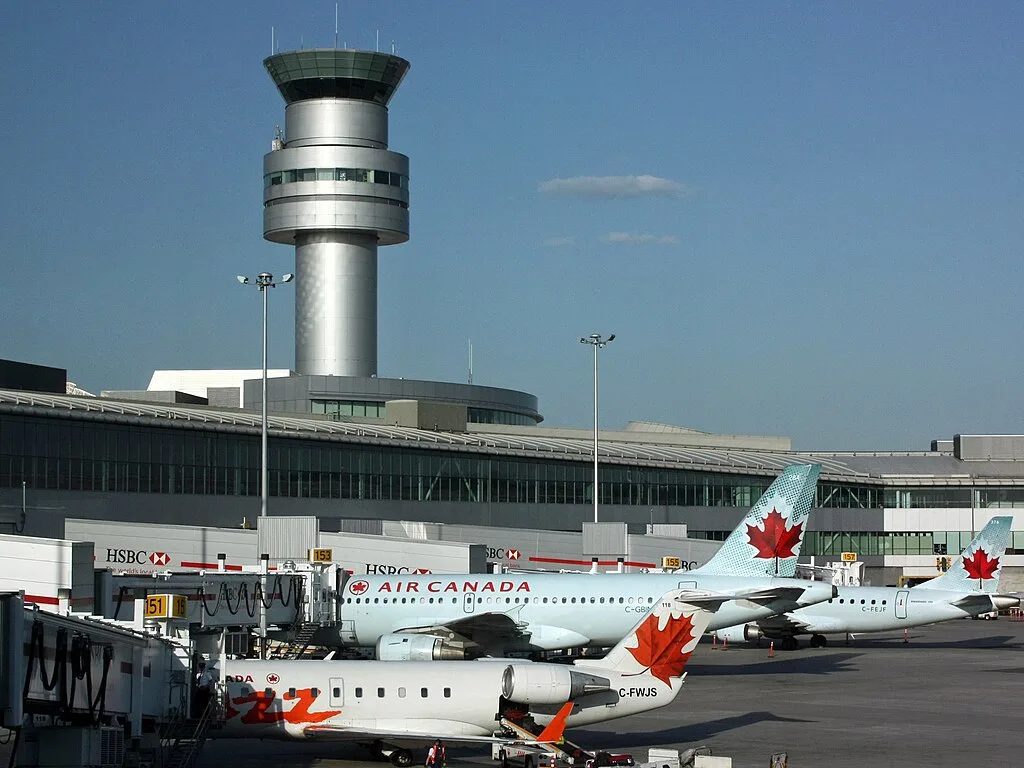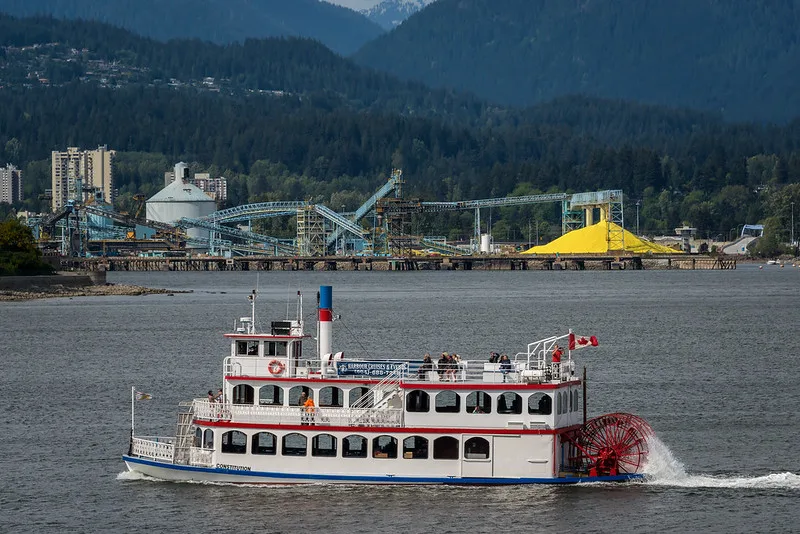Are you ready to embark on a journey through Canada’s vast and dynamic transportation network? From the rugged beauty of the Trans-Canada Highway to the bustling terminals of major airports, Canada’s transportation infrastructure is a marvel to behold.
Whether you’re a travel enthusiast eager to explore scenic highways or a curious mind intrigued by the logistics of transporting goods, Canada’s transportation network offers something for everyone. From the convenience of urban public transit to the awe-inspiring views from passenger trains, there’s no shortage of fascinating modes of travel to discover.
Get ready to satisfy your wanderlust and embark on unforgettable journeys through the heart of this diverse and vibrant country.

Roads and Highways
Vast Road Network
Canada has a huge network of roads that stretch for thousands of kilometers. These roads connect big cities, small towns, and even remote areas where few people live. One of the most important roads is the Trans-Canada Highway. This highway goes from one side of the country to the other, showing off Canada’s stunning scenery like tall mountains, dense forests, and wide-open prairies.
Scenic Highways
The Trans-Canada Highway is famous for its breathtaking views. As you drive along this highway, you can see beautiful landscapes that change from mountains to forests to prairies. It’s a great way to see the natural beauty of Canada while traveling from one place to another.

Аuthor : Mokozza – wikimedia.org
Urban Roads
In big cities like Toronto, Vancouver, and Montreal, there are many wide roads called expressways. These roads have many lanes and help keep the traffic moving, especially during busy times like rush hour. Expressways usually have clear signs and signals to help drivers find their way easily.
Keeping Traffic Flowing
Urban centers depend on these expressways to reduce traffic jams and make travel quicker. The roads are designed to handle a large number of vehicles, making it easier for people to commute to work, school, and other places. This helps save time and reduces stress for drivers.
Railways
Railways have been super important for Canada’s growth since the 1800s. They’re like big metal pathways that trains run on, carrying all sorts of stuff across the country. Canada has two main railway companies: Canadian National Railway (CN) and Canadian Pacific Railway (CPR). These companies have built huge networks of tracks that stretch for miles and miles.
- Transporting Goods: Trains are like big movers that can carry heavy things from one place to another. They transport all kinds of stuff, like grains from farms, minerals from mines, and things that factories make. It’s like a giant train delivery service that helps keep the country running smoothly.
- Passenger Trains: Trains aren’t just for carrying stuff; they also take people on trips! VIA Rail Canada runs passenger trains that connect big cities together. These trains don’t just get you where you need to go; they also offer amazing views of Canada’s landscapes.
Air Travel
Air travel is super important in Canada because the country is so big and has lots of faraway places where not many people live. Airplanes help connect these remote communities to the rest of the country and the world.
- Big Airports: Canada has some really big airports where lots of planes take off and land every day. Places like Toronto Pearson International Airport and Vancouver International Airport are like busy bee hives! They’re not just for flying within Canada; they also have flights going to other countries. So, if you want to visit another part of Canada or even go on a vacation to another country, these airports are where you’ll start your journey.
- Connecting Small Towns: But it’s not just big cities that have airports. Canada’s regional airlines make sure even small towns and far-off places have access to air travel. They run flights between these smaller airports and the bigger ones, so people living in remote areas can still get where they need to go.

Author : Lasse Fuss – wikimedia.org
Marine Transportation
Marine transportation is super important in Canada because it has the longest coastline in the world! With so much coastline, boats and ships play a big role in moving stuff around.
Busy Ports: Canada has some really busy ports where big cargo ships come and go all the time. Places like Vancouver, Montreal, and Halifax are like big doors that open to the rest of the world. These ports are where ships load up with things made in Canada, like lumber and cars, and also unload stuff from other countries, like electronics and clothes.
Essential Ferries: But marine transportation isn’t just about big ships; it’s also about ferries. Ferries are like big boats that carry people and cars across water. In Canada, ferries are super important for connecting coastal communities and islands. They’re like floating bridges that help people living by the sea get to the mainland or to other islands. Plus, they offer amazing views of Canada’s beautiful oceans and landscapes!

Author : Ken Lane – flickr.com
Public Transit
Public transit is like a big team effort to keep people moving smoothly in busy cities. It’s all about using different kinds of transportation to help everyone get where they need to go without adding to traffic jams or pollution.
Different Ways to Travel
In big cities like Toronto, Montreal, and Vancouver, there are lots of ways to get around using public transit. There are subways that go underground like big tunnels, buses that drive on regular streets, light rail trains that run on tracks above the ground, and commuter trains that take people to and from the suburbs.
Why Public Transit Matters
Public transit is super important because it helps reduce traffic jams and pollution. When more people use buses and trains instead of driving their own cars, there are fewer cars on the road, which means less traffic and cleaner air. Plus, it’s often faster and cheaper to take public transit than to drive, especially during busy times of the day.
Investing in the Future
Cities are always trying to make public transit better by investing in new trains, buses, and stations. They also try to make public transit more accessible for everyone, like building ramps for people with strollers or wheelchairs. By making public transit easier to use and better for the environment, cities are working towards a future where everyone can get around easily and without harming the planet.
Challenges and Innovations
Canada has a really big transportation network, but that doesn’t mean everything is perfect. There are some challenges that the country faces, like too much traffic, keeping everything in good shape, and making sure transportation doesn’t harm the environment. But don’t worry, Canada is always coming up with new and smart ideas to make things better!
Too Much Traffic: Sometimes, the roads and highways in Canada can get really crowded, especially in big cities during rush hour. It’s like everyone is trying to go to the same place at the same time! This can make it hard for people to get where they need to go on time and can even cause accidents. But Canada is looking into things like high-speed trains and special lanes for electric cars to help reduce traffic and make things move more smoothly.
Keeping Things in Good Shape: With so many roads, bridges, and tunnels in Canada, it’s important to make sure everything stays in good condition. But that’s not always easy because things can break or wear out over time. That’s why Canada is investing in new technologies and materials to make transportation infrastructure last longer and cost less to maintain. It’s like giving everything a little tune-up to keep it running smoothly!
Protecting the Environment: Canada cares a lot about the environment, so it’s important to find ways to travel that don’t harm the planet. That’s why Canada is turning to things like electric vehicles, which don’t produce pollution like regular cars do. There are also projects in the works to build high-speed trains that run on electricity instead of gas, which is better for the environment. Plus, smart technologies are being used to make transportation systems more efficient and reduce waste.
Conclusion
Canada boasts a vast and dynamic transportation network, connecting cities, towns, and remote areas through roads, railways, airways, and waterways. The Trans-Canada Highway offers stunning scenic views, while urban expressways keep traffic flowing smoothly in major cities like Toronto, Vancouver, and Montreal. Railways, operated by companies like Canadian National Railway (CN) and Canadian Pacific Railway (CPR), transport goods and passengers across the country. Air travel is crucial for connecting remote communities to the rest of the country and the world, with major airports like Toronto Pearson International Airport serving as busy hubs. Marine transportation plays a vital role in Canada’s economy, with busy ports like Vancouver and essential ferry services connecting coastal communities and islands. Public transit systems in urban centers reduce congestion and pollution, with investments in innovative technologies aiming to enhance accessibility and sustainability.
FAQs
What makes the Trans-Canada Highway special?
The Trans-Canada Highway isn’t just a road; it’s a breathtaking journey through Canada’s diverse landscapes, connecting provinces and territories with stunning views and cultural experiences.
How do railways shape Canada’s transportation landscape?
Railways, like those operated by Canadian National Railway (CN) and Canadian Pacific Railway (CPR), form the backbone of Canada’s transportation system, efficiently moving goods and people across vast distances with precision and reliability.
Why is air travel indispensable in Canada’s vast terrain?
Air travel acts as the lifeline of Canada’s remote communities, bridging the gap between isolated regions and urban centers, fostering connections, commerce, and cultural exchange on a global scale.
How does maritime trade contribute to Canada’s economic prosperity?
Maritime trade, facilitated by bustling ports like Vancouver and indispensable ferry services, underpins Canada’s economic vitality, facilitating commerce, tourism, and the exchange of goods and ideas along its extensive coastline.
What advantages do urban public transit systems offer?
Urban public transit systems aren’t just about getting from point A to B; they’re about reducing congestion, preserving the environment, and fostering inclusivity by providing accessible and affordable transportation options for all.